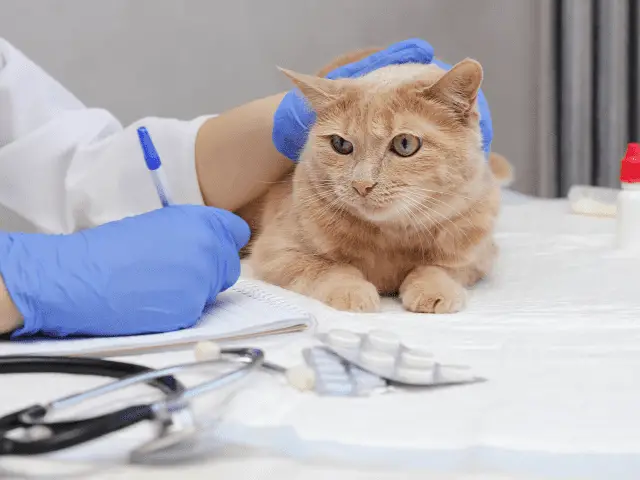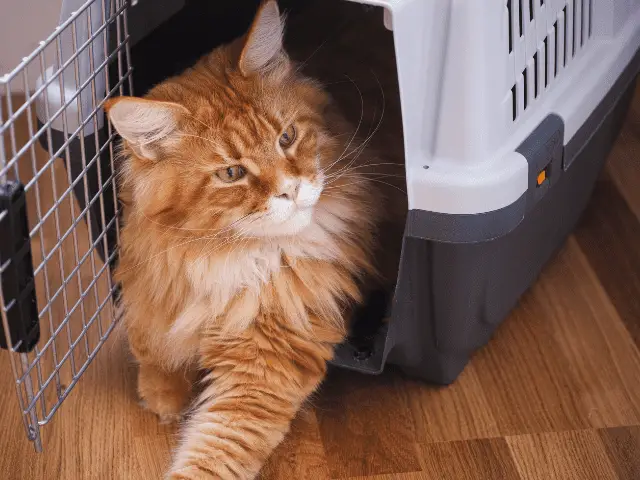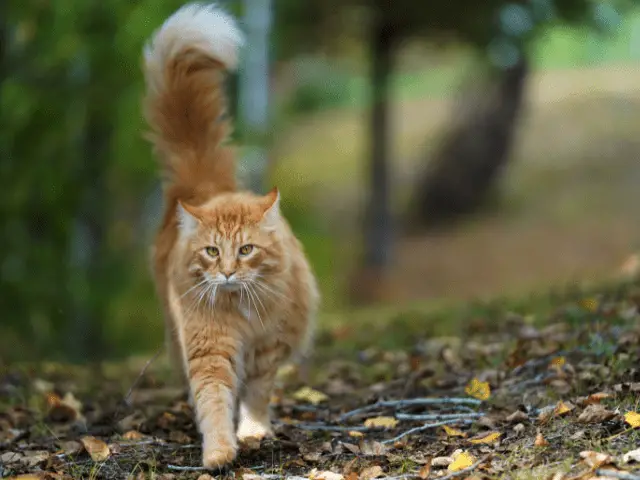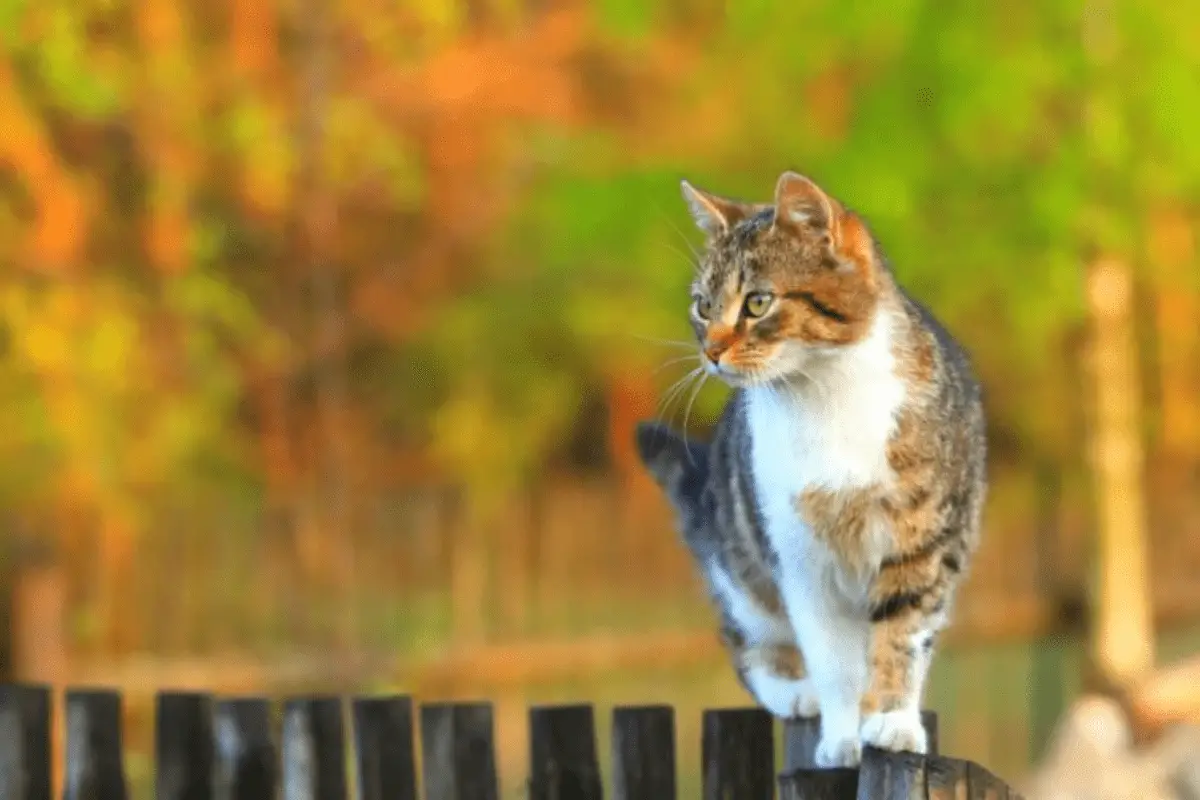Moving is stressful on your pets. It is likely that your outdoor cat will feel the most stress of all. There are some challenges that are unique to moving an outdoor cat. This will be further amplified if your cat spends most of his days outside.
Outdoor cats typically live shorter lives than their indoor equivalents. They are at a high risk of disease (if left unvaccinated) and predators. If you are planning a move soon, it may be a good time to transition your outdoor cat to an indoor cat.
The first thing we need to do is separate the two different types of outdoor cats.
For the sake of this article, we will categorize cats who spend a large amount of time inside, but still venture outside to relieve themselves or explore as “indoor/outdoor cats”. Cats that spend most or all their time outside will be categorized as “outdoor cats”.
Your method for moving your cat will vary on if he is an indoor/outdoor cat or an outdoor cat. You will need to assess if he is too feral to move. Regardless, one thing is consistent for outdoor or barns cats, they do not take to confinement well. The change will be difficult for them both for the actual move and the new home.
Below we will outline the best steps to make the move to a new home as smooth as possible for your outdoor cat.
This article contains affiliate links. If you make a purchase through one I may earn a commission.
Table of Contents
Visit Your Veterinarian

Before your big move, get a vet visit on the calendar.
For this reason, your cat will be up to date on all vaccines. You will also have the chance to discuss best ways to transport and lower stress for your feline. Your vet may prescribe a sedative to help with a long car ride.
If you plan to keep your cat an outdoor or barn cat, your vet visit is a good time to discuss micro-chipping.
In your new home, your cat may wander off more. A microchip can help your cat find his way back to you in the chance he gets lost.
There are also GPS tracking collars on the market that either work within a certain range or with a subscription connected to your phone. The subscription will allow you to locate your cat anywhere in the world if signal is present. While the subscription-based GPS collar has a significant price tag on it, it may be worth the peace of mind to know where your cat is after the move.
on the market that either work within a certain range or with a subscription connected to your phone. The subscription will allow you to locate your cat anywhere in the world if signal is present. While the subscription-based GPS collar has a significant price tag on it, it may be worth the peace of mind to know where your cat is after the move.
Determine if Your Cat is Too Wild
Sometimes an outdoor cat is too feral to move. Perhaps you took in a stray to ensure he is fed, or your cat just likes the outdoors too much, there are times it is not advisable to move your cat. With most of his life spent outside, he would not adjust to confinement without significant stress.
In this situation, you will want to check with your neighbors if they will care for the cat. If not, there are many organizations that help with the relocation and treatment of feral cats.
Adjust Your Outdoor Cat to the Carrier

The only safe way to transport your cat is in a cat carrier. It is likely your cat is not used to confinement. Over the course of a few weeks, begin conditioning your cat to his carrier. Small amounts of time that increase to a reasonable amount of confinement. You will want him to be as comfortable as possible, and this adjustment is key to comfort during the actual move.
Your cat will benefit from any comfort items being added to his carrier. It is best not to add food to the carrier while in transit, as it could make him motion sick.
Calm is Key
The most important thing to remember for moving an outdoor cat is to stay calm. While driving in the car, keep the sound level low.
When you arrive at the new home, set up a cat room if possible. A room completely dedicated to your cat will help him adjust the best. Set up a room with a litter box, toys, bed, and food for your cat. With all his necessary items, your cat can adjust to the unfamiliar sights, sounds, and smells of your new home.
Additionally, a cat room keeps your cat away from the commotion of moving. You do not want to risk your car running away or becoming agitated by the chaos.
Food is Vital
Cats consider where they eat their meals at home. Many experts suggest feeding your cat immediately upon arrival to your new home. You will not want to feed him until you know he has settled from the car ride.
Water is equally important when you arrive. Cats dehydrate themselves when stressed out, and a car is a pretty dry climate to spend time in.
Give Your Outdoor Cat Time to Adjust
Cats do not transition to new environments as quickly as people or dogs. It will take time. You will want to keep your cat in his cat room for at least three days. It is not a punishment or a solitary confinement. Calmly visiting and playing with your cat during this time will be wonderful for him.
The general recommendation is to take two weeks to allow your cat to adjust to his new home.
Keep Your Outdoor Cat Inside (At First)
After the initial three days in the cat room, allow your cat to explore the rest of the house. As shown above, it is best to continue to keep him inside for two weeks. Your cat will realize that this is not a temporary visit, but a permanent change.
Do not force your cat to leave his room. At this point, you need to remember everything should move at your cat’s pace. You will hurt the situation a lot more if you try to force them to explore. Certainly, if you leave the door open, your cat will begin to explore the rest of the house.
Keep Your Outdoor Cat Inside (Forever)
According to the veterinarians at Ohio State , it is possible to transition an outdoor cat into an indoor cat. Your new house may be the perfect time to try it. Keeping your cat inside will significantly reduce his risk of predatory attacks, diseases, and parasites.
, it is possible to transition an outdoor cat into an indoor cat. Your new house may be the perfect time to try it. Keeping your cat inside will significantly reduce his risk of predatory attacks, diseases, and parasites.
Outdoor cats are naturally great hiders. In a new home, your cat may not find the hiding places he needs to feel safe. You will need to add different types of hiding places, like boxes or cat cubbies.
When you move to your new home, follow the steps above to transition your cat from his cat room to the rest of the house.
In the beginning, you will need to watch doors to the outside. It is possible your cat may try to flee to return to his usual stomping grounds.
Compared to indoor cats, outdoor cats get more exercise organically. They run, hide, chase, and climb trees. This provides great exercise.
The issue with bringing an outdoor cat inside is that they will eat more and exercise less. You will need to schedule exercise and play time for your cat to burn off that excess energy.
Supervise Outdoor Time Initially

When the two weeks are complete, you will take your cat out for supervised outdoor time. This will allow him to continue his adjustment to the unfamiliar sights, sounds, and smells. The reason we limit the outdoor time initially is so your cat learns where his home is located and is not over-stimulated outside.
You will slowly increase the time outside and remove supervision until your cat returns on his own. He will fall back into his typical routine and might find more fun adventures outside!
There are some alternatives to allowing your cat to be loose outside. With this transition, you can also train your cat to wear a harness. (More on how to get a cat used to a harness) A leash and harness will allow your cat to still get plenty of outdoor time, but you know your cat is safe from the dangers of the outside.
Moving with an outdoor cat is certainly difficult.
Outdoor cats enjoy their freedom and do not adjust to confinement well. The changes experienced from a big move will be incredibly stressful for them. You will always want to consult your veterinarian to not only ensure the health of your pet but also to ask for the best advice in moving your cat.
During and after your move, you will need to offer food, water, and a chance to relieve themselves. Without these needs met, your cat will dehydrate and become increasingly agitated.
Ultimately, time and quiet are the most important factors for your cat to adjust to his new home. You can use this opportunity to transition your indoor/outdoor cat to an indoor-only cat. It will help him live a longer and safer life.
So whether you intend to let your cat back out to explore the world or intend to keep him inside all the time, with these steps, you will transition as smooth as possible.
Final Thoughts
We hope you enjoyed this helpful guide on moving an outdoor cat.
Have more pets moving with you? We also have guides for moving with goldfish and even moving with a bearded dragon!

